Lora O'Brien's Blog, page 3
November 10, 2015
Finding My Path - Part 3
 Finding My Path - Part 2 is Here
Finding My Path - Part 2 is Here
I didn't have the benefits of a visit from an angel, providing a detailed task list of Work for me to achieve. Nor did I find myself in the middle of an Aisling (vision) dream full of fancy maidens and clear instructions. What did I get?
Crows.
Flocks of bloody crows, collectively known as a 'murder, you know, and for good reason. Noisy bastards they are. After a couple of weeks of constant cawing, tapping at the windows, landing on the car, and other assorted okay-for-a-once-off-but-weird-that-this-is-regular sort of behaviours, it started to penetrate my skull that perhaps there was a message of some sort going on here. (Maybe? Ya think?)
Thus started a relationship with a little old Irish goddess named Morrigan. She is well enough known to not need too much of an intro, but for those who haven't happened across her she is known as a battle goddess, the "Witch of the Tuatha Dé Danaan”, bitch of blood and battle. You will see her name translated as ‘Phantom Queen' or 'Great Queen’, the difference being whether or not there should have been a fada over the o - Mor or Mór Rioghain. For what it's worth, she's always used the Great Queen epithet in my experience with her.
Visits to Her Cave proved... interesting. The previously mentioned Gates of Hell: a slippery climb down into the darkness, envelopment in complete black. Divine mud below and a journey above. There were tattoos taken to my flesh: a trial, a commitment that stretched both ways. With careful record keeping (to spot patterns), in time and with patience, I came to understand what she wanted. It boiled down to two major demands:disseminate REAL information
inspire the next generation.
Um, okay then. By that point, I was already involved in the Neopagan community; teaching, talking, training students. I also had two children, and was raising them in an open and (I hoped) encouraging environment. I figured I was already doing my bit for the cause. My response to Her was: if there is more required of me, cough up with the support system to enable it. When I said I started a relationship, I meant it - it goes both ways. I will not work in a vacuum!
As a day job, I was running my own body piercing business, but the location was wrong and it needed a change. I had given notice and sourced new premises, all set to move onwards and upwards, when I was contacted by a book publishers I'd been talking with. The book proposal I'd sent was not what they were looking for apparently, but they loved my writing and wanted to work with me. Was there something else I could let them look at, something that hadn't been seen before, perhaps? The book I'd always wanted to read but hadn't been written popped into my mind immediately. Irish witchcraft: looking at native folklore, gods, traditions, seasonal celebrations and historical information, as well as a wee bit on how my own path was developing, for reference and support. Although Ireland has a strong Neopagan and magical community, we're all so damn individualistic there's a lot of solo practitioners. I was offered a book contract immediately. With a very tight deadline, that forced me to quit the business expansion plans and focus just on the writing. It was the first time a book on Irish magical traditions, with actual academic research and experience, had been published by a real live Irish magical-type person.
Does that sound suspiciously like "disseminating real information" to anybody else?
Then came the somewhat inevitable process of breaking down in order to rebuild. Another child was born to me - very effectively stalling the writing career. Then a messy marriage break-up, and financial difficulty. A part-time job came up locally as a tour guide in the Rathcroghan heritage centre. Two months later, they asked me to take on the newly-vacated manager's position. I would be dealing with national heritage and tourism bodies, county administration and educational establishments, as well as living history events, school tours and visitors. But I had no child-minding facility, no local support system, and no clue as to how I could manage logistically or emotionally single parenting three young children, plus a demanding full-time job. It was not lost on me that this job would quite neatly fulfil both of the primary requirements my Goddess had laid out before me.
My response was: if you want me to do this job, you will need to move your arse and make it possible - nay, easy – for me to do it.
A series of fortunate events coincided around that very time to ensure that my children got the best schooling and care outside the home that they could possibly receive while I was working, including the inception, development and building of an advanced child-care facility in the village. The heritage management job was mine. There formed a small but perfectly formed network of local friends, as well as the wider friends and family who provide exceptional support, encouragement, and occasional sympathetic shoulders to cry on, plus regular sword and spear fights to let off steam.
Overall, then and now, there is a practical, give-and-take, working relationship with a deity best known for her darkness and general badassery. She helps me to Work for her. Because of my work there are people all over the world who know that 'Witta' and 'Druidism' are not the only available options if you feel drawn towards Irish magical traditions – though of course there has been much more wonderful writing on the topic since. Because of my work, one of the best preserved and most important archaeological and mythological 'Celtic' sites in the world is finally receiving the recognition and respectful development that it so richly deserves, including nomination to the list for UNESCO World Heritage Status. I have refused to formally dedicate my children to Her (really, was She thinking that I would?!), but because of my work there is an ever-increasing youth population who are more informed and occasionally even excited about Irish history and heritage. They are the landowners, politicians and decision-makers of the future. Her sovereignty and prophecy/guidance aspects are not to be ignored.
My work is sufficient for myself, my goddess, and what I've been given. I have to wonder now though, is there a bigger picture to this work? Who else has received a similar or common directive? I’m coming across more and more folk who seem to have been called in very similar ways to very similar Work.
Comments here or messages directly to me would be an intriguing way to compile a pattern, don’t you think?
Check Out My Current Publications Here.
Published on November 10, 2015 13:50
October 23, 2015
Finding My Path - Part 2
 Rath Mór, Rathcroghan
Finding My Path - Part 1 is Here
Rath Mór, Rathcroghan
Finding My Path - Part 1 is Here
The Wiccan relationship to Deity is very civilized.
It's not that the High Priestess or High Priest doesn't get ridden - anybody who's witnessed a proper Drawing Down the Moon (or Sun) can attest to the strength and power that is tapped through the ritual. The invocation can be oracular or full-on possession, and even evocations have a particularly flavoured energy that is undeniably common across all circles and all covens. Of course Wiccans individually will have their own relationships with their gods, but as far as the group work of the tradition goes, I'd experienced powerful but mostly genteel interaction with the gods, in a structured, formal setting. I was somewhat prepared, in that I knew what Deity felt like, inside or outside of myself. I could recognise energy patterns and flavours, what smelled right and what didn't, and I had a good grounding in protection and, well, grounding.
The Deity I found out here though, was very new to me.
During our first exploration of Rathcroghan, I brought my family and we stopped at one of the sites. I entered respectfully, introduced us all, and basically said hi to the natives. When we later took the guided tour at the local heritage centre, I was a little disappointed to learn that this visually impressive ring fort was not a major ceremonial site; simply a medieval domestic settlement. Recent geophysical research has shown that there is actually an older, larger site underneath, but whatever the original function, it was an appropriate enough first port of call.
That tour taught me a whole lot I hadn't found out through my own research, and we were fortunate to get a guide who seemed as excited about the mythology as I was. Rathcroghan's main mound is at least as old as Newgrange, older than Tara or any of the other well known 'Celtic’ sites, and the whole complex is the best preserved royal site in Europe. The layers fascinated me - whole eras of our history represented, the landscape being added to but never taken from, sacred sites recycled countless times: but always the theme of kingship and the major burials for an entire province, stretching for thousands of years, contained in this relatively tiny geographical area.
What is it about Cruachan that made this place important enough to keep the big knobs from every tribe in every age ceremonially and practically anchored to this spot? What is it that continues to draw tuned-in people from all over the world - literally - to visit, and even live in this place? I'm still not sure of the answer, or if there even can be a definitive answer. My own path has led me here, and I'm still trying to figure out the specifics of how to achieve the work that's been put before me.
The Work: that's the key, isn't it? If we can figure out what our work is, what it is that we're supposed to be doing on this spin around the merry-go-round, we're doing well.
Thelema names it your "True Will'; every man and every woman is a star, and if we're all traversing on our proper orbit there'll be no collisions and the universe all runs along smoothly. Neopaganism generally alludes to the idea of finding your path, walking along, doing whatever that it's right for you to be doing. Wicca presents the idea "An it harm none, do what you will" - based loosely on lines from Liber al vel Legis, granted, but develops this Rede into a much debated and often wide-ranging philosophy that nonetheless consistently focuses on doing your own thing. Not just what you, like, want to be doing dude… but what you actually know to be the right thing.
Those of us who take the leadership and priesthood/shamanic responsibility seriously know that all of this means one thing. Work. It means we have stuff to do (sometimes lots of stuff to do), and usually not enough hours in the day in which to do it. But how do we know WHAT to do? I was about to find out.
Finding My Path - Part 3 is Here
Published on October 23, 2015 13:34
October 15, 2015
Finding My Path - Part 1
 The Empress - Robin Wood Tarot On the surface of things, it’s rather odd that I should have ended up in the back arse of nowhere, with no connection to the county and 2 small kids in tow.
The Empress - Robin Wood Tarot On the surface of things, it’s rather odd that I should have ended up in the back arse of nowhere, with no connection to the county and 2 small kids in tow.But you’d be surprised how many interesting folk have ended up in Roscommon through the years, by “accident” – either permanently or just passing through. I’ve hosted Witches, Druids, Bards, Tantra practitioners, Warriors, Ceremonial Magicians, Shamans and a Seanchaí (storyteller). It seems that few of them, if any, had actually planned to be here.
I know I didn’t.
Yes I wanted a quiet rural location, and a house I could afford, in which to raise a young family. The exact location was pretty damn irrelevant at the time – “anywhere but here” was the driving force. I very nearly bought a house in County Clare, my mother’s home county… and I may end up back there yet.
The Tarot decided me eventually: I picked one card per county, and the most fortuitous was Roscommon, with the Empress. I’m sorry to admit that my first question was – “Where is Roscommon?” I found it easy enough on the internet, though the county’s tourism marketing strategy was dire back then (I helped fix that, YOU’RE WELCOME!) A suitable house was located, viewed, and once the sale was agreed, it occurred to me that maybe, ya know, perhaps, I should possibly do a wee bit of research into what sort of a place I was bringing my kids into.
The results were something of an eye opener – Rathcroghan, seat of the High Kings and Queens of Connacht, Ireland’s Western province, for over 2000 years. A vast complex of multi layered archaeological sites; steeped in myth and legend, epic literary history, and all sorts of infamous folklore. I’d read stories of Cruachan, knew the history of Queen Medb and the Cattle Raid of Cooley, the Táin Bó Cuailnge… but had somehow failed to connect all that to the real life physical location of County Roscommon.
And the Cave. Her Cave. Right bang in the middle of Rathcroghan, this historical and archaeological greatness, lies the entrance to the Otherworld, the Cave of the Cats. The Gates of Hell.
I was Traditional Wiccan at the time. I’d found a coven t train in when I turned 18, and luckily it was a really good one. There wasn’t much in Ireland at the time, and that was way before we had this new-fangled internet craziness (coz I’m old). I was blessed to find a group with whom I could develop safely, was encouraged to grow at my own pace, and could use the Trad Wicca structure to explore wherever my path was leading me.
My roots though, my family learning, were all about the old stories – the folk and fairy tales, natural awareness, Irish myths and legends. I received my 3rd Degree recognition as a Wiccan High Priestess, with thanks and respect. At that time, I was sure I was leaving it all behind as I moved West to begin my new life…
Check back next week for Part 2!
Published on October 15, 2015 13:33
August 18, 2015
Ogham - the Ancient Irish Art of Writing
 170r of the Book of Ballymote (1390) Ogham (Pronounced: OH-mm, spelled 'Ogam' in Old Irish) is an ancient Irish language, written in a series of simple line markings along a straight edge. The original alphabet is a set of 20 characters or feda, arranged in 4 groups of 5, called aicmí. In later manuscripts, 5 additional letters appear, called the forfeda.
170r of the Book of Ballymote (1390) Ogham (Pronounced: OH-mm, spelled 'Ogam' in Old Irish) is an ancient Irish language, written in a series of simple line markings along a straight edge. The original alphabet is a set of 20 characters or feda, arranged in 4 groups of 5, called aicmí. In later manuscripts, 5 additional letters appear, called the forfeda.The characters themselves are known collectively as Beth-luis-nin, after the first letters of the groups, similar to the way Greek Alpha and Beta gave us the ‘alphabet’. Each Ogham letter is associated with a plant or tree, and a particular sound, and represents a collection of ‘kennings’; keys to knowledge, called the Briatharogaim.
While the texts and tales frequently mention Ogham being carved on wood and bark - used for spells and to record genealogies - it is the 358 inscribed stones known to remain in Ireland which provide a more permanent record. These seem to have served as burial or commemoration stones, boundary markers, and even a legal record for who might hold title to the land on which they stand.
It is impossible to definitively date the language, as we have no certain fixed points in history, archaeology, or linguistics. Most will agree that the Ogham carved stone tradition dates at least back to the 300’s CE, coinciding with the coming of the Latin language to Ireland, through trade with Roman Britain and the scholarship of Christian monks. Whether this was the start of the script, or it has deeper Pagan roots, is a question that waits to be answered.
Ogham’s importance in a hero’s burial is immortalised in the Táin:
“Then Etarcomol’s grave was dugSee an Ogham Stone in the Morrigan's Cave at Cruachan
And his headstone planted in the ground
His name was written in Ogam
And he was mourned.”
Please Leave Your Comment Below!
Published on August 18, 2015 16:22
August 7, 2015
Working with Your Local Sacred Sites

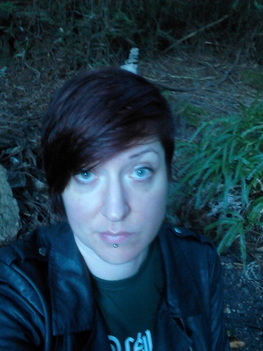 We walked together into the wooded place, my friend and I.
We walked together into the wooded place, my friend and I. The trees radiated silence and safety, all around us, the echoes of their age and grace and strength. We walked on a carpeted depth of needles and bark, a comfortable covering on earth that was dry and damp.
 I saw the water, a spring from the earth flowing and filling the space with fresh energy.
I saw the water, a spring from the earth flowing and filling the space with fresh energy.Man's hand was evident, through concrete channels and corroded pipes it ran and fell, filled with fish in the pool below that were not native to this place, though they did not know.
"What is the tradition here?" I asked her, seeing the built stones, the small dishes, the careful clearing and caretaking that is evident when people are moved by space, by place. When they find it sacred. When we connect.
And she stopped. Unsure. The question, the thought, was new to her, I think.
She who had travelled to my land in search of sacred space, and found it. She who had brought me there, in her land, to a place she knew as special, as beautiful, but had not considered "sacred". She who had given me the gift of this place, shared her treasure with one from foreign shores.
And she told me it was a box spring, a simple functional thing. Man-made, on the grounds of the college campus where she works. No more than 50 years old, which is old in her land, to her people.
But it is sacred, because people have made it so. Or have people honoured it so because it is inherently sacred, flowing there among the Redwoods?
Today I'm thinking about space and place. About what makes your local sites sacred.
The story above is not from the rich pickings of Ireland, but from when I was teaching and visiting in California this year. I was cut off from my ground, my earth, my roots, and I sought connection there.
What is your nearest 'sacred site'? I'm not talking the big stuff, leave off with Tara or Uisneach, or the old native American burial ground 50 miles from you.
Is it your garden (or balcony, or farm, or park)? What grows there? What lives there?
Where do local people gather in times of crisis, or doubt? Where do they go to pray?
How do people interact with the site? Do they keep it clean and tidy? Do they hunt or fish or forage the wildlife there? Do they meditate, or draw, or sing and dance?
These are the makings of a sacred site.
Yes the big ones are important. Of course (and you're talking to the Number 1 fan Rathcroghan has ever had, right here), of course we build relationships and feel their pull, their ancient magic, the depth of their energy.
But if you don't have an ancient hotspot on your doorstep... what do you have?
Explore it, and let me know ;-)
Leave a Comment and Share What You Think!
Published on August 07, 2015 17:44
July 21, 2015
Sources of the Táin Bó Cuailnge
Early Irish manuscripts are the oldest remaining extant literary source material in Europe, opening a fascinating window to the Medieval society in which they were written down, and the older tales and oral traditions which they record for us to enjoy today.
The Táin Bó Cuailnge, the ‘Cattle Raid of Cooley’, (often just called "the Táin" - pronounced - TAWn, though there are actually a number of different Táin stories) lies at the heart of Ireland’s epic storytelling legacy.
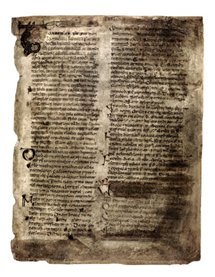 Leabhair na hUidre, pic from the RIA This is a tale set around the 1st Century CE, in the middle of the Iron Age – told and re-told through the ages. The story survives in a couple of different versions, called ‘recensions’; there are 3 of these remaining to us today.
Leabhair na hUidre, pic from the RIA This is a tale set around the 1st Century CE, in the middle of the Iron Age – told and re-told through the ages. The story survives in a couple of different versions, called ‘recensions’; there are 3 of these remaining to us today.
There is a partial text in Leabhair na hUidre, ‘the Book of the Dun Cow’, which is dated to the late 1000’s CE, and the rest of this version is found in the ‘Yellow Book of Lecan’, dated to the late 1300’s. Together they make a complete Táin story, copied over the centuries from book to book. Some of the prose language is thought to be as old as the 700’s CE, and the poetic verses even older.
The second version is found in the ‘Book of Leinster’, dated to around the 1100’s CE, when a scribe tried to bring together a complete story, and updated the language and style to match his own time. There’s a later third recension too, scattered in bits and pieces through other manuscripts.
The Book of Leinster scribe may have thought the tale worth re-telling, or perhaps he was reluctant and had been ordered to just get on with it, as there are elements of the Táin that didn’t sit well with him at all. His note in the margins, written in formal Latin script, tells its own tale:
Please Leave Your Comment Below!
The Táin Bó Cuailnge, the ‘Cattle Raid of Cooley’, (often just called "the Táin" - pronounced - TAWn, though there are actually a number of different Táin stories) lies at the heart of Ireland’s epic storytelling legacy.
 Leabhair na hUidre, pic from the RIA This is a tale set around the 1st Century CE, in the middle of the Iron Age – told and re-told through the ages. The story survives in a couple of different versions, called ‘recensions’; there are 3 of these remaining to us today.
Leabhair na hUidre, pic from the RIA This is a tale set around the 1st Century CE, in the middle of the Iron Age – told and re-told through the ages. The story survives in a couple of different versions, called ‘recensions’; there are 3 of these remaining to us today.There is a partial text in Leabhair na hUidre, ‘the Book of the Dun Cow’, which is dated to the late 1000’s CE, and the rest of this version is found in the ‘Yellow Book of Lecan’, dated to the late 1300’s. Together they make a complete Táin story, copied over the centuries from book to book. Some of the prose language is thought to be as old as the 700’s CE, and the poetic verses even older.
The second version is found in the ‘Book of Leinster’, dated to around the 1100’s CE, when a scribe tried to bring together a complete story, and updated the language and style to match his own time. There’s a later third recension too, scattered in bits and pieces through other manuscripts.
The Book of Leinster scribe may have thought the tale worth re-telling, or perhaps he was reluctant and had been ordered to just get on with it, as there are elements of the Táin that didn’t sit well with him at all. His note in the margins, written in formal Latin script, tells its own tale:
But I who have written this story, or rather this fable, give no credence to the various incidents related in it. For some things in it are the deceptions of demons, other poetic figments; some are probable, others improbable; while still others are intended for the delectation of foolish men.Read my Review of the Best Táin Translation
Please Leave Your Comment Below!
Published on July 21, 2015 16:51
July 6, 2015
Writing Short Stories (and Getting Paid)
 Most folk start their fiction writing career by getting published in shitty mags that don't pay, but if you're a good writer, you can bypass all that.
Most folk start their fiction writing career by getting published in shitty mags that don't pay, but if you're a good writer, you can bypass all that.This blog post started as an email to my eldest daughter, but I thought some of ye might find a little practical guidance useful. So, here ya go.
You should be reading short stories, and see if you can get a look at what they've published previously to give you an idea of what they are paying for. It can be intimidating to begin with, but you'll soon get the hang of writing and submitting stories targeted to the particular publication.
Without writers, there is no magazine. They need us.
It's not a quick fix solution though. Most pay on publication (when the story appears in either the digital or print edition, and it's not HUGE money.
But you're getting paid for stuff that comes out of your brain. Like making money by magic... which is kinda cool.
So, here's some paying fiction markets that you can look at to get the ball rolling.
APEX MAGAZINE
"An elite repository for new and seasoned authors with an other-worldly interest in the unquestioned and slightly bizarre parts of the universe."
Covers: Monthly e-zine publishing dark speculative fiction.
Editor's Note: "We want science fiction, fantasy, horror, and mash-ups of all three of the dark, weird stuff down at the bottom of your little literary heart." Monthly e-zine publishing dark speculative fiction.
Send complete ms (full story).
Length: 100-7,500 words. Pays 6¢/word.
http://www.apex-magazine.com/submission-guidelines/
ANALOG SCIENCE FICTION MAGAZINE
Analog will consider material submitted by any writer, and consider it solely on the basis of merit. We are definitely eager to find and develop new, capable writers.
We have no hard-and-fast editorial guidelines, because science fiction is such a broad field that I don't want to inhibit a new writer's thinking by imposing Thou Shalt Nots. Besides, a really good story can make an editor swallow his preconceived taboos.
Basically, we publish science fiction stories. That is, stories in which some aspect of future science or technology is so integral to the plot that, if that aspect were removed, the story would collapse. Try to picture Mary Shelley's Frankenstein without the science and you'll see what I mean. No story!
The science can be physical, sociological, psychological. The technology can be anything from electronic engineering to biogenetic engineering. But the stories must be strong and realistic, with believable people (who needn't be human) doing believable things–no matter how fantastic the background might be.
Preferred Length 2,000 - 7,000 words
Analog pays 8-10 cents per word for short stories up to 7,500 words
http://www.analogsf.com/information/submissions.shtml
FANTASY & SCIENCE FICTION MAGAZINE
We have no formula for fiction. We are looking for stories that will appeal to science fiction and fantasy readers. The SF element may be slight, but it should be present. We prefer character-oriented stories. We receive a lot of fantasy fiction, but never enough science fiction or humor. Do not query for fiction; send the entire manuscript. We publish fiction up to 25,000 words in length. Please read the magazine before submitting.
Payment is 7-12 cents per word on acceptance (this is good as you'd get paid quicker than having to wait for publication!).
https://www.sfsite.com/fsf/glines.htm
GLIMMER TRAIN MAGAZINE
We two sisters genuinely welcome new writers, and are happy to consider any original short story (no novels, poetry, or stories written for children, please) that has not appeared in a print publication. One of our greatest pleasures is being the first to publish a great story by an emerging voice.
We pay writers generously for accepted stories and publish them in a highly regarded physical publication where great fiction enjoys a physical existence that will persist.
Payment for accepted pieces is $700.
Stories not to exceed 12,000 words.(No minimum, though it's rare for a piece under 500 words to read as a full story.) Held three times a year: Open to submissions in JANUARY, MAY, SEPTEMBER. Next deadline: September 30th.
http://www.glimmertrain.com/standard.html
Other Useful Stuff for Writing Short Stories
5 Steps to Write a Short Story.
Writing a Short Story.
5 Secret Tips To Writing A Successful Short Story.
 If you're a paying fiction magazine or website who understands the essential value of quality writing to your business, and you'd like to be listed in a blog post like this...
If you're a paying fiction magazine or website who understands the essential value of quality writing to your business, and you'd like to be listed in a blog post like this...Get in Touch with Me!
Published on July 06, 2015 11:42
May 31, 2015
3 of my Top Fiction Books
A Love Story? Really...?
Yeah. I loved this book. Here's why...
It follows the two protagonists, Emma and Dexter, through twenty years as friends, and lovers, and not friends.
The catchy thing is the way it's written - each chapter gives a slice of one day, the same day, over those years. And it's fascinating.
Fate, choices, and decisions. One Day.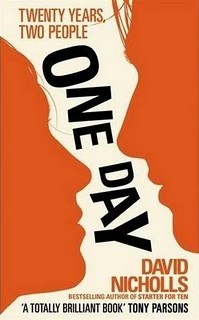
 Utterly. Terrifying.
Utterly. Terrifying.
Not a horror, or a thriller, just a simple enough dystopia set in the not too distant future, in which girls are not born but bred. Raised in schools and trained to please men in the hope of being chosen as a companion...
I stupidly began to read this just before bed time and couldn't put it down until I finished it, during the small hours.
Then I lay there, eyes open, for quite a while, and panicked about the world we are creating for our children. (As was the experience of everyone I loaned it to.)
Thanks Louise O'Neill. Thanks.
 Right so, this is a wee bit cheaty ya ken, but ya cannae choose jus wan o these scunners and no the others...
Right so, this is a wee bit cheaty ya ken, but ya cannae choose jus wan o these scunners and no the others...
Yup, it's the Tiffany Aching series by Terry Pratchett.
Starting with 'The Wee Free Men', to 'A Hat Full of Sky', through 'Wintersmith', and on to 'I Shall Wear Midnight', each of these books is a perfectly crafted tale of the coming of age of young Tiffany Aching, a witch in the making from the Chalk downs.
Her stalwart companions (as she's their 'big wee hag') are the Nac Mac Feegle, a race of diminutive stature and mighty spirit, who may well be referred to as fairies... except for the way they got booted out of fairlyland for drinkin' and fightin' and stealin' ya ken.
Ostensibly a series for 'young adults', I see them very much as teaching manuals for real, practical withcraft, and thus of vital importance to anyone who has a 'new age' interest in learning such.
And the bittersweet news is that Sir Terry Pratchett's 41st and final Discworld book was the fifth in this series, called 'The Shepherd's Crown', though the publication date has not yet been released.

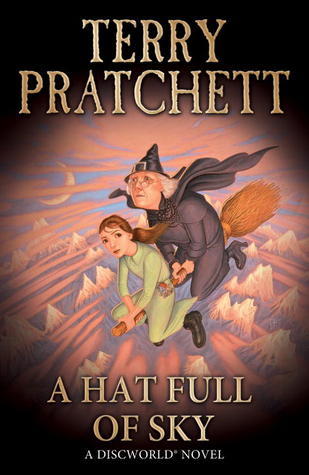

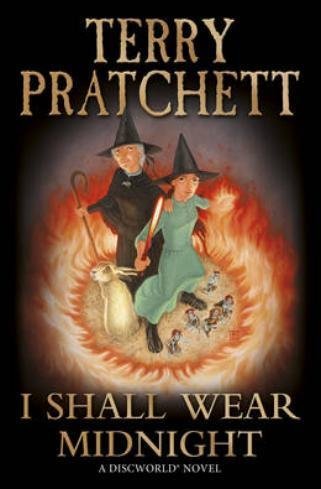 Have you read any of these books? Will you tell me what you thought of them in the comments below?!
Have you read any of these books? Will you tell me what you thought of them in the comments below?!
Yeah. I loved this book. Here's why...
It follows the two protagonists, Emma and Dexter, through twenty years as friends, and lovers, and not friends.
The catchy thing is the way it's written - each chapter gives a slice of one day, the same day, over those years. And it's fascinating.
Fate, choices, and decisions. One Day.

 Utterly. Terrifying.
Utterly. Terrifying.Not a horror, or a thriller, just a simple enough dystopia set in the not too distant future, in which girls are not born but bred. Raised in schools and trained to please men in the hope of being chosen as a companion...
I stupidly began to read this just before bed time and couldn't put it down until I finished it, during the small hours.
Then I lay there, eyes open, for quite a while, and panicked about the world we are creating for our children. (As was the experience of everyone I loaned it to.)
Thanks Louise O'Neill. Thanks.
 Right so, this is a wee bit cheaty ya ken, but ya cannae choose jus wan o these scunners and no the others...
Right so, this is a wee bit cheaty ya ken, but ya cannae choose jus wan o these scunners and no the others...Yup, it's the Tiffany Aching series by Terry Pratchett.
Starting with 'The Wee Free Men', to 'A Hat Full of Sky', through 'Wintersmith', and on to 'I Shall Wear Midnight', each of these books is a perfectly crafted tale of the coming of age of young Tiffany Aching, a witch in the making from the Chalk downs.
Her stalwart companions (as she's their 'big wee hag') are the Nac Mac Feegle, a race of diminutive stature and mighty spirit, who may well be referred to as fairies... except for the way they got booted out of fairlyland for drinkin' and fightin' and stealin' ya ken.
Ostensibly a series for 'young adults', I see them very much as teaching manuals for real, practical withcraft, and thus of vital importance to anyone who has a 'new age' interest in learning such.
And the bittersweet news is that Sir Terry Pratchett's 41st and final Discworld book was the fifth in this series, called 'The Shepherd's Crown', though the publication date has not yet been released.



 Have you read any of these books? Will you tell me what you thought of them in the comments below?!
Have you read any of these books? Will you tell me what you thought of them in the comments below?!
Published on May 31, 2015 14:04
May 19, 2015
Marriage Equality in Ireland
 You know, I'm kinda tempted to just fill a whole blog post with quotes from experts.
You know, I'm kinda tempted to just fill a whole blog post with quotes from experts.Because they are freely available. Children's charities such as Barnardos, and the Irish Society for Prevention of Cruelty to Children (ISPCC), are calling strongly for a Yes vote in Friday's Referendum on Marriage Equality in Ireland.
They believe, in their expert opinion and experience, that a Yes result on May 22nd will be the best thing for Ireland's children. As do the country's top psychologists...
 Psychological Advice on Marriage Equality Really, we could actually just leave the 'debate' there.
Psychological Advice on Marriage Equality Really, we could actually just leave the 'debate' there.Right thinking folk would take the expert advice and just get out and vote Yes. Even the major political parties are agreeing - that's gotta be a first right? Everywhere we look now we can see posters from Fine Fail, Fine Gael, the Labour Party and Sinn Fein... all with the same message. Vote Yes. For Equality.
The No campaign is banging their tin drum very loudly though. Some people are unsure, doubtful, confused. Nobody wants to be viewed as a bigot, or a homophobe, but their fears and confusion are being played on by a professionally manipulative and well funded campaign.
Let's simplify. On Friday 22nd May you, an Irish citizen resident in Ireland, can vote to decide if:
Marriage may be contracted in accordance with law by two persons without distinction as to their sex.
Vote Yes, or Vote No.
A No Vote says you do NOT believe that other Irish citizens should have the same rights and legal protection that you, your friends, family and your children all enjoy. Unless they are straight hetrosexuals.
Are they all straight? Do you know what they do in the privacy of their bedrooms? Do you know who they love? Look at your family right now. Your colleagues, your companions, your club members. Do you know for sure they are all straight up hetrosexual? Do you care?
If just one of them is Lesbian, or Gay, or Bisexual, or Transexual (LGBT)... do you really care? Is it any of your business?
Really, it's not. It's none of your business. People are people and love is love, and what goes on in people's homes between consenting adults is NOBODY ELSE'S BUSINESS.
And yet you get to decide. You get to decide whether these people get the same human rights as you currently enjoy, without even having to think about it. That's your right, and your privilege. That's a big responsibility.
Flip the scenario a little - Do you know anyone who isn't white? A person of a skin colour that is different to your own?
What if the choice was whether that person gets to marry the person they love, regardless of skin colour? I hope you wouldn't even dream of denying them their rights.
I hope you're not THAT person.
And yet it's the same question for LGBT people who want to get married. People who want to raise families, who have children they love, children they want to keep safe and secure, legally protected the same as every other Irish child.
Because these families already exist. They are your neighbours, your colleagues, your community. A Yes Vote will NOT take anything from families, couples and children who are already protected.
Your Yes Vote will change nothing - except for families who have an LGBT member or members already, whether that's the parents or the children.
A Yes Vote tells Ireland's LGBT community (10% of our population, at least) - tells all of our fellow adult and teenage LGBT citizens that they are that little bit safer, that little bit more respected.
Voting Yes on Friday tells your fellow Irish citizens that you see them as Equal to you. If they want to get married to the person they love, they can get married. That's it.
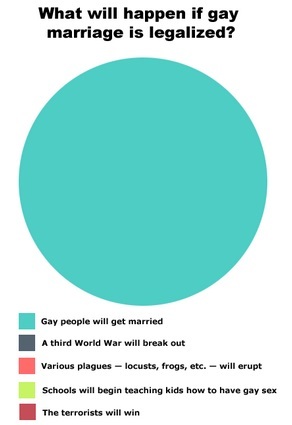 If Ireland allows Marriage Equality Seriously. That's it.
If Ireland allows Marriage Equality Seriously. That's it. You Vote Yes, and Irish people get to marry each other.
In lovely, happy, joyful, fabulous (and possibly kinda gay) weddings. Weddings! Joy!
 And these are the CONSEQUENCES Yup. The consequences of your Yes Vote will be... Marriage Equality. For everyone.
And these are the CONSEQUENCES Yup. The consequences of your Yes Vote will be... Marriage Equality. For everyone.It really is that simple.
Please Vote Yes for Equality in Ireland FOR MORE INFORMATION VISIT: www.MarriageEquality.ie
Published on May 19, 2015 08:28
May 1, 2015
Bealtaine Traditions in Ireland – May Day
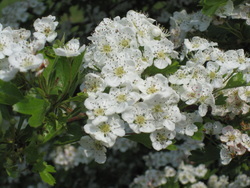 Hawthorn Flowers May Bush, May Flowers, May Pole and May Bough are all traditions still to be found scattered through the Irish countryside come Bealtaine, 30th April (May Eve) and 1st May (May Day).
Hawthorn Flowers May Bush, May Flowers, May Pole and May Bough are all traditions still to be found scattered through the Irish countryside come Bealtaine, 30th April (May Eve) and 1st May (May Day).The turning of the year from Winter Darkness to Summer’s Light was and still is marked with flowers, fire, and fucking. (Maybe I should have said fertility? It’s also an ‘f’ word, so the alliteration would stand, but fucking just felt more honest.)
Luck and protection, health and happiness are the themes, and everything done as an individual or as a community focused on these important drives.
Originally we had two seasons, Summer and Winter, Sam and Gam in sean ghaeilge (old Irish). These were the times when everything changed – people, herds and flocks moved from winter to summer dwellings and pastures. Work focus changed. Women got pregnant at this time to ensure that come the third trimester they could be safely tucked up with indoor jobs beside the fire, preparing for a Spring birth with fresh foods available for essential sustenance. So, fucking in the fields was not just for fertility fun folks, this is a serious scheduling issue right here.
Today, I did not go out and get pregnant. There’s dedication to the old ways and all, but that’s going a step too far at my time of life.
I did wash my face in the morning’s dew. Hey, I just turned 37 - I’ll take what I can get with regards to ancient traditions to impart a fresh faced glow. The sun’s rays piercing water, shimmering on a liquid surface this morning gives the blessing of beauty to those in the know. Or so they say.
There will be flowers strewn on my doorsteps, front and back, once the kids get home from school and go a-gathering. Technically, flowers should be gathered on May Eve. But the girls were busy doing their hair and I’m not sure it matters all THAT much, long as it gets done. Interestingly… I just realised that my teen sibling daughters spent May Eve together, one changing her hair to bright light blonde, and the other to darkest midnight black. Talk about unconscious balancing forces and appropriate timing?
I will make a trip to the well at Rathcroghan and tidy up around the Hawthorn Maybush there; make sure it’s secure and growing well, even pretty it up a little. Also, clean out the inevitable rubbish that collects round the triple spring. Because people are idiots. Sigh.
My Nana told me a story years ago about a cousin of hers in County Clare, who would go out on May morning with rotten eggs, and mix them into the soil of her neighbours’ fields. Bealtaine is a time for magic and mischief, and if you don’t look out you’ll be on the receiving end of all that.
So last night and today my protective fires were lit, my boundaries and thresholds re-walked and reinforced, and I did a general magical tidy up round the house and land. Checking the fences, as it were. I pity the May Fool who tries to cross here uninvited *summer smiles*.
All is well, and as it should be, and I wish you that and more, mo chairde.
Bealtaine shona dhaiobh, chun solas is beatha a fháil. Beir Bua!
Published on May 01, 2015 04:02



